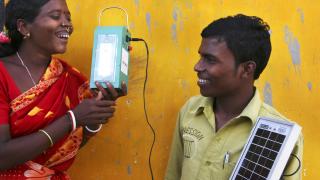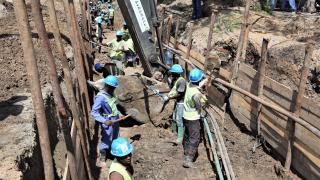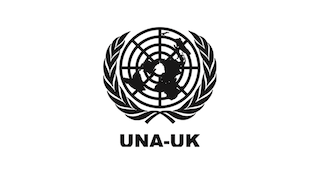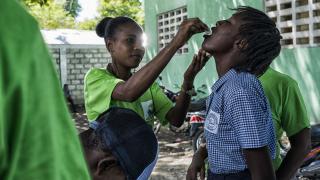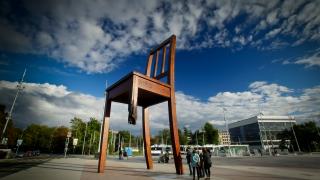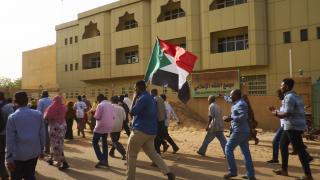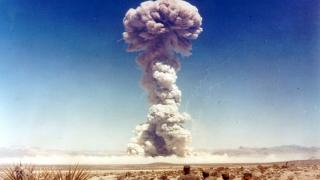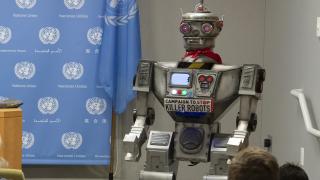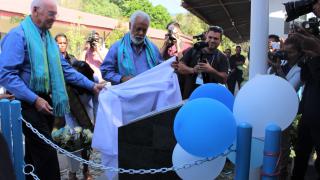
In spring 2020, state parties to the Treaty on the Non-Proliferation of Nuclear Weapons (NPT), seen by most as the cornerstone of nuclear weapons diplomacy, will meet in New York for the Treaty’s Review Conference (Rev Con). This will conclude another five-year ‘review cycle’, in which states and civil society collectively try to identify concrete actions to move forward the NPT’s three pillars: non-proliferation, disarmament, and the peaceful uses of nuclear technology – and mark 50 years of the Treaty’s entry into force.
This anniversary is a double-edged sword, a cause for both celebration and concern. The NPT rests on a diplomatic grand bargain, under which the five ‘recognised’ Nuclear Weapon States (NWS: China, France, Russia, United Kingdom and the United States) will pursue negotiations on disarmament and provide assistance on the development of peaceful nuclear technologies; in return, the Non-Nuclear Weapon States (NNWS) promise not to develop or acquire nuclear weapons.
The Treaty has a strong record on peaceful uses and non-proliferation (with a few possible exceptions such as North Korea, which quit the NPT in 2003, and Iran). But doubts are mounting as to whether the Treaty is really capable of delivering on disarmament, with progress slowing since the late 1990s and now in some areas reversing.
If the weapon states are thought not to be keeping up their side of the bargain, the whole regime could weaken further, or worse, break down.
The moment is grave and inauspicious. Deep distrust among the weapon states, fuelled in part by the global trend towards nationalist strong-man politics and misperceptions about ambiguous nuclear modernisation plans, is driving the decline in global security relations. There is a perception that nuclear weapons risks are rising. The Trump Administration has systematically withdrawn from hard-won legal agreements like the Iran Nuclear Deal, the INF Treaty and soon perhaps the Open Skies Treaty. The prospects for extending New START, which limits the size of the US and Russian nuclear arsenals, appear worryingly dim, despite of an unconditional offer by Russia. Even the fundamental nuclear norm of restraint seems under attack: just consider President Trump’s loose threats to North Korea over Twitter.
So, what would success look like in 2020? The conference need only review the treaty, not ‘fix’ international security.
The primary objective is a final outcome document, agreed by consensus, that contains clear commitments – backed up by steps for implementation – that strengthen and advance the regime equally on all three pillars. Failing that, the treaty’s rules of procedure allow for an outcome document to be adopted by a majority vote, although this would not carry as much political weight.
There are, however, major obstacles to achieving a final outcome document. Acrimony and distrust could sour the conference and make cooperation unpalatable. Ongoing attempts by NWS to water down past commitments, such as the '64-Point Action Plan' adopted by consensus in 2010, or claim they are no longer relevant, will simply be unacceptable to many NNWS. The Review Conference is also mandated to make progress on a Weapons of Mass Destruction-Free Zone in the Middle East. This agenda provoked such disagreement at the last Rev Con in 2015 that it sunk the outcome document, and states are fearful of this happening again. Making progress in this area is extremely challenging since Israel, the only country in the Middle East with nuclear weapons, is not an NPT party.
So, while an outcome document by consensus should remain Plan A and a document by vote is Plan B, it remains a distinct possibility that neither can be achieved. What form might a credible Plan C take then, whereby enough progress could be achieved across all three of the NPT’s pillars that it would compensate for, or at least mitigate, the lack of an outcome document?
Precedent shows that states could agree separate decisions (or ‘voluntary collective agreements’) on certain issue areas. This may enable progress on this review cycle’s hot topics, including but not limited to: reducing nuclear risks in the immediate term; encouraging transparency around arsenals and doctrine; promoting peaceful nuclear technologies; developing technical solutions to nuclear disarmament verification; and strengthening non-proliferation safeguards. And even if states cannot agree collective measures, they can still explicitly reaffirm their commitment to the treaty, which may include bringing individual commitments (sometimes called ‘gift baskets’) as demonstrations of good faith.
It is hard to predict what the weapon states will do, and much may hinge on the success of their ‘P5 Process’ meeting in early 2020, chaired by the United Kingdom. One recurrent request has been for a symbolic political statement affirming the aspiration not to use nuclear weapons, citing the so-called Reagan-Gorbachev statement: ‘A nuclear war cannot be won and must never be fought.’ So far even this has had a lukewarm reception, but the diplomatic winds could shift, or an acceptable alternative form of words maintaining the spirit of the aspiration might still be found.
Other recommendations have included: a joint and unequivocal recommitment to the NPT by all parties; a tightening of negative security assurances to NNWS; a five-way signature of the Protocol to the South East Asian Nuclear Weapon-Free Zone, prohibiting nuclear weapons activities in that region; and that the NWS agree to core responsibilities and/or minimum standards of acceptable behaviour in their possession of nuclear weapons.
If progress is made on all three pillars, the goal is then to ensure enough political will is maintained for implementation over the next five years. But if states cannot make even incremental progress, and the responsibilities towards civility and respect are ignored, then ongoing questions about whether the NPT is fit for purpose will take on a worrying new resonance.
Photo: Military personnel observe a nuclear weapons test in Nevada, the United States, in 1951 © US Government


